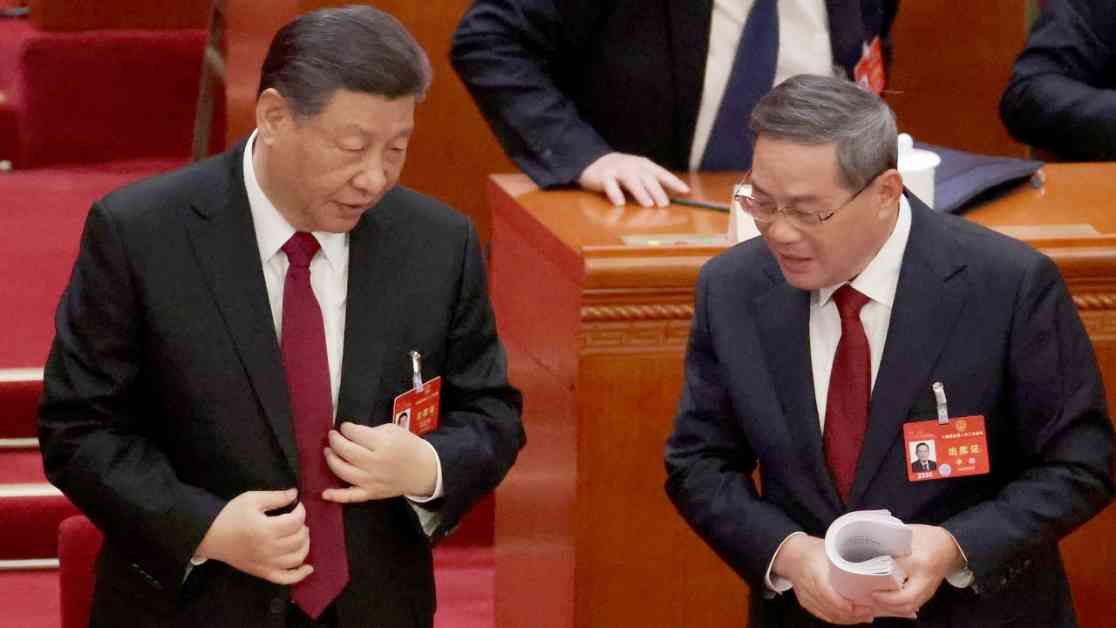China is facing some significant challenges as it strives to reach its new growth target of around 5% for GDP expansion. While this target is the same as last year’s, achieving it this year will be more difficult due to various factors at play. One key obstacle is President Xi Jinping’s reluctance to implement stimulus measures, despite calls from many businesspeople for such action. Let’s delve deeper into the issues and potential solutions China may need to consider in order to reach its growth target.
Impact of Anti-COVID Controls
In 2023, China experienced a one-off boost in economic growth after removing strict anti-COVID controls. This temporary lift helped propel the country towards its growth target. However, in 2024, China will not have the same advantage. With the ongoing challenges posed by the COVID-19 pandemic, especially with new variants emerging, it will be difficult for China to replicate the same rapid economic recovery it saw in the previous year.
The effectiveness of China’s anti-COVID measures will be crucial in determining the country’s economic performance in 2024. As the world continues to grapple with the pandemic, China’s ability to contain the virus while also maintaining economic activity will be closely watched. Any missteps in managing the health crisis could have serious repercussions on the country’s growth prospects.
Xi Jinping’s Approach to Stimulus
President Xi Jinping’s aversion to stimulus measures presents a significant challenge to China’s growth ambitions. While many businesspeople are calling for increased government spending to stimulate the economy, Xi Jinping has been cautious in his approach. The Chinese government’s emphasis on structural reforms and long-term sustainability has led to a more restrained fiscal policy, which may limit the country’s ability to achieve its growth target.
Despite the pressure to boost growth through stimulus, Xi Jinping’s administration remains focused on addressing underlying issues such as debt levels, financial risks, and environmental sustainability. The government’s commitment to economic stability and structural reforms is commendable, but it may hinder short-term growth prospects. Balancing the need for immediate stimulus with long-term sustainability will be a key challenge for China in the coming years.
Challenges and Opportunities
China’s economy is at a critical juncture, facing both challenges and opportunities. The country’s reliance on investment and exports for growth has come under scrutiny, with calls for a more consumption-driven economic model. Shifting towards a more sustainable and inclusive growth strategy will be essential for China to achieve its long-term development goals.
Investments in innovation, technology, and human capital will be crucial for China’s future growth. The country’s ambitious goals in areas such as renewable energy, artificial intelligence, and advanced manufacturing present opportunities for sustainable and high-quality growth. By prioritizing investments in these strategic sectors, China can position itself as a global leader in innovation and technology.
However, China must also address structural challenges such as income inequality, regional disparities, and demographic shifts. Ensuring inclusive growth that benefits all segments of society will be essential for social stability and long-term prosperity. By implementing targeted policies to address these challenges, China can create a more resilient and equitable economy.
In conclusion, China’s path to reaching its new growth target will be fraught with challenges, but also opportunities for transformation and innovation. President Xi Jinping’s cautious approach to stimulus, combined with the need for structural reforms and sustainable growth, will shape the country’s economic trajectory in the coming years. By addressing these challenges head-on and seizing the opportunities for growth, China can navigate its way towards a more prosperous and sustainable future.



























